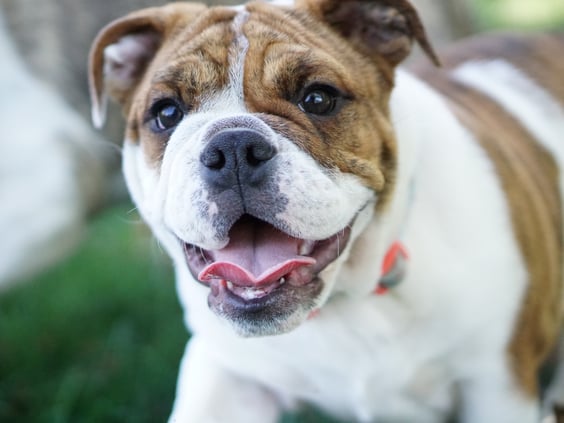What is Brachycephaly in Cats and Dogs?
Updated on: October 16, 2023 | Author: Starwood Pet Travel

Oh, how we adore those cute flat-faced and squished face cats and dogs. From tiny little ones like Shih Tzus and Pugs to larger breeds like Boxers and Mastiffs, we can't help but be charmed by their wrinkly faces, big eyes, and adorable snorts. And let's not forget about the flat-faced felines – from elegant Persians to adorable Scottish Folds, their snub noses have stolen our hearts. However, it's important to note that these flattened faces can lead to significant health issues.
This is particularly true for pets who wish to travel internationally with their human companions. Due to the rising popularity of flat-faced dogs and cats and the appeal of their unique facial features, breeders have deliberately enhanced traits like shortened snouts, flattened noses, and wrinkled skin in certain breeds. Unfortunately, this emphasis on these characteristics also amplifies the risk of potential health problems.
Brachycephaly
Brachycephaly, a term derived from Greek meaning "short-headed," characterizes dogs and cats belonging to this category with their shortened snouts, narrowed nostrils, and often constricted throats and windpipes. The severity of these deformities varies across breeds, ranging from moderate to extreme. Mixed breeds may display mild or no brachycephalic traits.
The predicament arises because these pets possess the same internal physical structures as their longer-snouted counterparts, but they are cramped into much smaller spaces. Symptoms of brachycephaly can include:
- Noisy breathing, particularly during inhalation
- Gagging or retching while swallowing
- Intolerance to exercise
- Bluish tongue and gums
- Fainting
For brachycephalic pets, every breath becomes an arduous task:
- Their elongated soft palate extends into the back of their mouth, obstructing nasal airways.
- The already narrow nostrils can completely close, making it nearly impossible to inhale sufficient air and oxygen.
- Throat tissues may partially obstruct the trachea, further hindering airflow.
- The trachea itself may also be deformed.
In cats, the first two issues are most prevalent. However, respiratory difficulties are not the only concern for snub-nosed dogs and cats. They are also prone to a range of other health issues directly linked to their deformed heads.
For instance, adult dogs have 42 teeth (cats have 30). Brachycephalic breeds often exhibit an underbite, with the lower jaw protruding beyond the upper jaw, resulting in limited space to accommodate their teeth. As a consequence, they experience crooked, overlapping teeth that do not align properly for biting, chewing, and swallowing, leading to difficulties in eating. Consequently, these dogs and cats frequently suffer from dental and gastrointestinal problems.
Insufficient oxygen intake can also contribute to heart and organ failure. Moreover, smushed-faced dogs and cats have an increased susceptibility to skin and ear infections due to inadequate ventilation. Brachycephalic pets can also encounter eye and even neurological issues.
Breeds Considered Brachycephalic
While some airlines may have slight differences in the list of breeds they consider snub-nosed, we've listed the most common dog and cat breeds below.
Snub-Nosed Dog Breeds:
Bulldogs (all breeds), Boxer, Cavalier King Charles Spaniel, Shih Tzu, Boston Terrier, Mastiff, Pugs, Affenpinscher, Brussels Griffon, Cane Corso, Chow Chow, Dogue de Bordeaux, English Toy Spaniel, Japanese Chin, Lhasa Apso, Brasileiro, and Pekingese.
Snub-Nosed Cat Breeds:
British Shorthair, Himalayan, Persian, Exotic Shorthair, Scottish Fold, and Burmese.
Heat Can Be a Fatal Threat
Overexertion or anxiety can cause a lack of oxygen, resulting in collapse or even death. Flat-faced pets are especially vulnerable to deadly heatstroke, as they struggle to regulate their body temperature. This is because dogs and cats do not sweat, and their only means of cooling down is by staying calm or panting. While dogs with longer muzzles can quickly draw in air that cools as it passes over their tongue, this mechanism does not work efficiently for dogs with short or flat muzzles, making them prone to overheating.
Brachycephaly and Air Travel
Air travel adds additional stress to dogs and cats, with unfamiliar people, sounds, and unpredictable environmental changes. While pets in good health generally cope well with these changes, those with chronic breathing difficulties (and potentially other health problems) may find the strain of air travel overwhelming. This is particularly true in the summertime due to the added heat.
Every airline has its own regulations regarding which animals can fly, especially brachycephalic dogs and cats. Understanding the risks associated with your pet's brachycephaly is the initial step in determining whether they are suitable for air travel. The next step is consulting with your chosen airline to familiarize yourself with their specific rules. Lastly, it is crucial to consult your veterinarian to discuss your pet's individual health situation.
Subscribe to the Blog
Enjoy our content? Get them sent to your inbox!
Subscribe Now!

